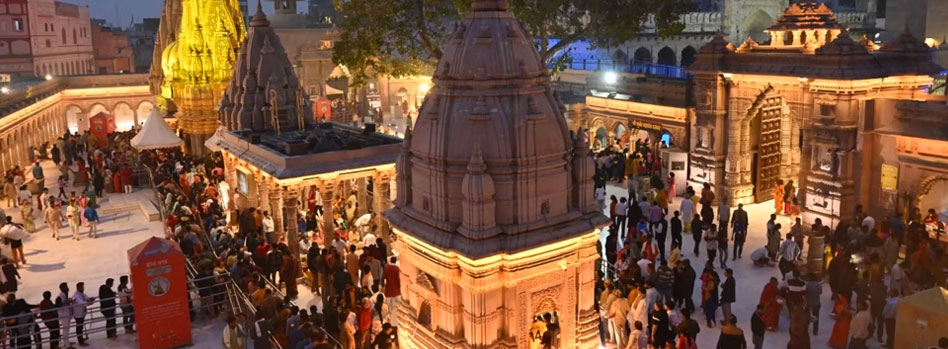[By Tushar- 13/05/24]Every traveller visiting the sacred city of Varanasi is bound to experience a sense of ecstasy that touches their heart and mind. The city with numerous temples with respective historical and mythological backstories deserves at least a single visit. Not only the temples, but also the mighty Ganges, the Ganga Aarti, sailing on boats across the holy river meandering alongside the city, the multiple river banks constructed with flights of stairs, the Banaras Hindu University, the narrow lanes, and last but not the least, the elegant Banarasi sarees that embellished women to a completely new look, all these features make Kashi a distinct world of its own.

Hinduism holds the distinction of being the most widely practiced religion in India and is revered as one of the oldest religions globally. Across the country, numerous cities are renowned for their religious significance, with Varanasi, also known as Kashi, standing out prominently for its temples and sacred sites. The Best Time to Visit Banaras is the winter season Best Time to Visit and the early summer season, that is from November to March. Take a look at the most revered temples that have been erected in the city.
The Kashi Vishwanath Temple stands as the centrepiece of spiritual devotion in Varanasi. Located on the western banks of the River Ganga, it holds the esteemed status of being one of the twelve holiest Jyotirlingas, revered centres of worship dedicated to Lord Shiva across India. This ancient temple, mentioned in the Puranas, houses a linga atop a silver altar as its main deity. What sets this temple apart is its storied history of destruction and reconstruction over the centuries. Despite facing numerous challenges, the temple remains one of Varanasi's most revered landmarks, drawing thousands of devotees and tourists daily.
Nestled within the grounds of Banaras Hindu University in Varanasi, the New Vishwanath Temple, also known as the Birla Temple, stands as a magnificent architectural marvel. Dedicated to Lord Shiva, one of Hinduism's revered deities, this temple seamlessly combines traditional and modern architectural elements, attracting visitors and devotees alike. Surrounded by verdant gardens, the temple offers a tranquil and serene ambience for visitors to enjoy. Additionally, the temple grounds provide stunning vistas of the nearby Ganges River, adding to its allure as a must-visit destination in Varanasi.
The temple holds immense significance as it symbolically encompasses the entirety of India within its sacred premises, worshipping the nation as a divine entity. It stands as one of the rare temples dedicated to Mother India, drawing millions of visitors from across the globe each year. Constructed in 1936 by Babu Shiv Prasad Gupta, a renowned freedom fighter, the temple is renowned for its marble-carved map of India and notably lacks any specific deity from a particular religion.
The temple of Kaal Bhairav in Varanasi houses the aggressive form of Lord Shiva, worshipped as Kaal Bhairav. The temple has a historical significance that dates back to the 17th century, making it an age-old shrine. It is believed by the locals that Kaal Bhairav is the protector of the city and is considered the guardian angel of Banaras. The locals of Varanasi have a custom of seeking permission from the temple before visiting the Kashi Vishwanath Temple or leaving the city. It is a popular belief that whoever visits Varanasi must first visit the temple of Kaal Bhairav and seek permission to stay safely in the city.